Greenhouses & polytunnels - introduction
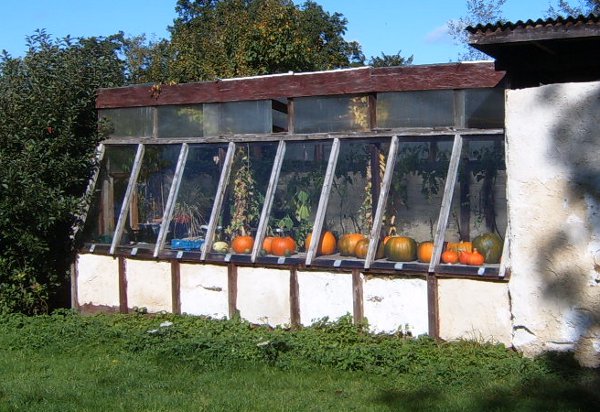
“Who loves a garden loves a greenhouse too.” – William Cowper
Contents
What are greenhouses and polytunnels?
Greenhouses and polytunnels are permanent or semi-permanent structures made of transparent material such as glass or plastic that protect plants from the cold and wind. They allow through the whole spectrum of sunlight, but trap the (infra-red) radiation that is reflected from the earth or plants (plus the warmed air is prevented from mixing with cooler air from above), which causes temperatures to rise. Carbon dioxide also allows sunlight through, but traps reflected infra-red radiation from the earth – which is why it’s called a ‘greenhouse gas‘.

Greenhouses tend to be smaller but more permanent structures made of more durable (and expensive) materials than polytunnels (e.g. glass rather than plastic sheet). They range in size from a cloche or a cold frame to the ‘Crystal Palace’, or the Eden Project – the world’s largest greenhouse.
The cultivation of plants under controlled conditions within structures has been practiced since Roman times, but greenhouses proper arrived in Europe after the Renaissance and massively increased in number in the UK in the 19th century. They’re now much more affordable. In rural or suburban areas, domestic greenhouses around 2-3 metres long are common in gardens. Polytunnels are cheaper per cubic metre than greenhouses, and therefore tend to be used for larger-scale growing.

Greenhouses can be of traditional wood and glass (the more environmentally-friendly but more expensive option) or of polycarbonate sheet and aluminium frame. They can also be made of unusual materials like recycled plastic bottles or lego. They can be free-standing, pop-up or lean-to (against the house or a wall). Polytunnels are free-standing, and usually made of polyethylene sheet stretched over a semi-circular frame of steel or aluminium tubes.

High-tech, experimental greenhouses have been developed, that can involve technologies such as: soap-bubble shading/reflecting (to capture warmth in winter and reflect excess heat in summer); trapping surplus daytime heat in heat-stores for slow release at night; internal recycling of water to reduce usage; hydroponics / aeroponics / aquaponics to maximise yields and minimise use of water, energy, time and space.
What are the benefits of greenhouses and polytunnels?
Greenhouses and polytunnels create better growing conditions for plants, providing the following benefits:
- Longer growing season, so higher yields
- Larger range of plants can be grown
- Reduced food miles – you can grow fruit or veg that would otherwise have to be imported
- More efficient use of resources like water and compost, due to controlled and confined space; you can also harvest rainwater from the roof
- Easier to control pests and weeds – wind-blown weed seeds for example
- Protection for plants from extreme weather conditions, birds etc.
- You don’t get wet in the garden if it’s raining

What can I do?
Start small: it’s cheap and easy to build your own small structure to get started, and it can be fun to use your creative and practical skills to make something from scratch (from recycled materials). A few poles (old tent-poles will do, or bamboo poles tied together to make an A-frame) and some plastic sheeting is all you need for a miniature polytunnel. You can also get cheap kits from garden centres. Remember that you’ll need to water regularly, as the plants won’t be getting any rain, and that may involve lifting the structure off – but, if you find that your yields increase, you could up-scale to larger structures in subsequent seasons.

Make a cold frame – an old window on a brick or timber base. Cold frames are for ‘hardening off’ plants germinated in trays in the house or greenhouse – a halfway stage from propagation in trays in a warm environment to planting outside. Leave the top open a little bit more each day, until the plants are ready to transplant to the garden.
There are numerous suppliers of greenhouses, polytunnels and the materials and information required to make them. Search online and you’ll find thousands, or visit your local garden centre. Greenhouses are usually cheaper at the end of the season, in the autumn. Look on Freecycle or other freebie websites, or in the classified section of the local press – although they’re usually snapped up quickly, and you’d probably have to dismantle and transport it.

Large structures (e.g. the larger polytunnels) often need planning permission – check with your local planning office if you are in doubt about your local regulations.
Here’s an idea for a £30 DIY greenhouse from Permaculture Magazine. Here’s how to buy, dismantle and re-build a second-hand greenhouse, and here’s how to put up a polytunnel. Think about tethering it to the ground to prevent damage by strong winds. Incorporating ventilation, and ease of access with a wheelbarrow, into the DIY design would also be a good idea.
In the northern hemisphere, it’s best to have the largest side of the greenhouse or polytunnel facing south, for maximum unobstructed sunlight. A lean-to greenhouse might be a good idea, because you don’t actually need the glass on the north side, and if it’s next to your house, it will receive a little bit of warmth and protection, and provide more insulation for your house.
Staging can add height and tiers so that you can grow more food in the same space. You’ll need ventilation (pests can proliferate in still air) and in summer it may get too hot. A greenhouse can have roof windows, and polytunnels flaps that open at the ends. We wouldn’t recommend heating, as the environmental benefits of using the structure would be wiped out. If a crop needs a heated greenhouse, grow something else.

With a greenhouse or polytunnel, you can have fresh green leaves like mizuna, rocket and lettuce all through the winter. It’s impossible to buy anything that tastes like fresh green salads you’ve just picked, and is one of the best arguments for having a greenhouse. In early spring you can germinate plants such as French beans in the greenhouse earlier than you would outdoors (before planting them outdoors later in the season). You can follow this with tomatoes, aubergines, peppers and cucumbers. You can sow French beans in pots in august, then bring the pots inside to have beans in october and november. The strawberry season can be hugely increased, and you can plant a grapevine at the north end (so that it doesn’t cast a shadow over other crops).

Of course your greenhouse or polytunnel will need regular watering, as it isn’t getting any rain. Watering can or hose is the easiest solution, but it’s labour intensive. There are several kinds of automated systems, such as drip irrigation (on top of the soil), seep hoses (under the soil) or water timers between your tap and your hose. The bigger your structure, the more useful an automated system will be. It’s best to irrigate in the evening, so that the water has time to soak into the soil without evaporating.

You can find more detailed advice about greenhouses & polytunnels in books or online (see resources) – and here are month-by-month guides to what to sow, plant and harvest in your polytunnel or greenhouse.
Specialist(s)
Thanks to David Calver for information.
The specialist(s) below will respond to queries on this topic. Please comment in the box at the bottom of the page.

David Coton has been selling greenhouses all over the UK since 1999. He now runs GardenSite which is based in the Midlands and is a leading supplier of many garden products. David can help should you require any greenhouse growing tips, help or advice and either he or his horticulturalist team would be delighted to answer any questions you have below.

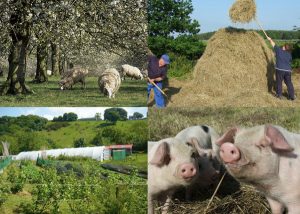

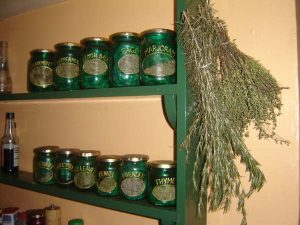
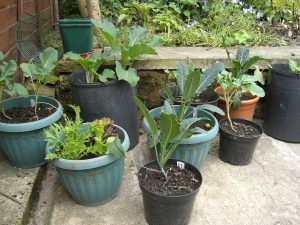
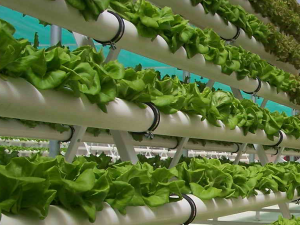

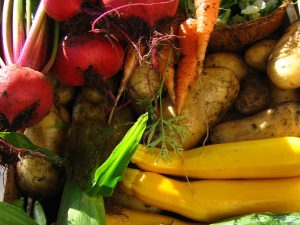
5 Comments
Hi, I made my first “greenhouse” from unwanted materials: an old frame and cling foil (stretch wrap used for pallets ). I wanted it to be strong enough to withstand wind and rain so I wrap it around few times. Now I wonder if enough sunlight comes though it into the “greenhouse”.
During a sunny day you can clearly see that it is shady inside. I think there are about 4-5 layers of cling foil.
Is that too many?
Thank you for your question, often the stretch wrap will be tinted which will certainly filter the light rays, and the layering will also hinder the amount of light that will pass through.
If it’s feasible and you are able to rework the frame I would then suggest collecting up and using recycled large clear plastic drinks bottles, cutting the top and bottom off, cutting them down the middle and straightening them out into small panels, these can then be used to staple or nail onto the frame.
I hope this helps, All the best David.
someone told me you can now buy polytunnels made from recycled hard plastic sheeting for windy environments where the flexible sheets might not last a season (and we all want to reduce our use of plastics).do you know of these? my interenet search is not being very helpful, but i have potential to get funding for our community to get one if only i knew who supplied them!
thanks 🙂
I built a great green house using alkathene pipe,left over from other jobs and found in skips,built the side wall up about 900mm in 50×50 timber frame, then banged 150mm nails in to thread the piping onto.Had to buy the polythene but the results were worth it.Have also use alkathene piping hoops to make cloches and net supports.
Cant resist making an encouraging comment on tunnels! We have had great success with a homemade polytunnel. A ‘new’ bought version would have cost £2k or more, so instead for £300 (give or take a tenner) we built a 14ftx20ft tunnel including a decent weight cover from an online company. Used 25mm conduit plastic pipe with a timber framework. In retrospect I would suggest using 30 or 40mm pipe for more durability. It performs excellently and up to now withstands up to 60mph winds (its in a slightly exposed position). Our successes include aubergines and salad peppers as well as plenty of other veggies and insect friendly plants.
One last thing, I fully advocate a little over engineering on the frame, common sense prevailing in that respect.
Have fun and keep safe!
Neil